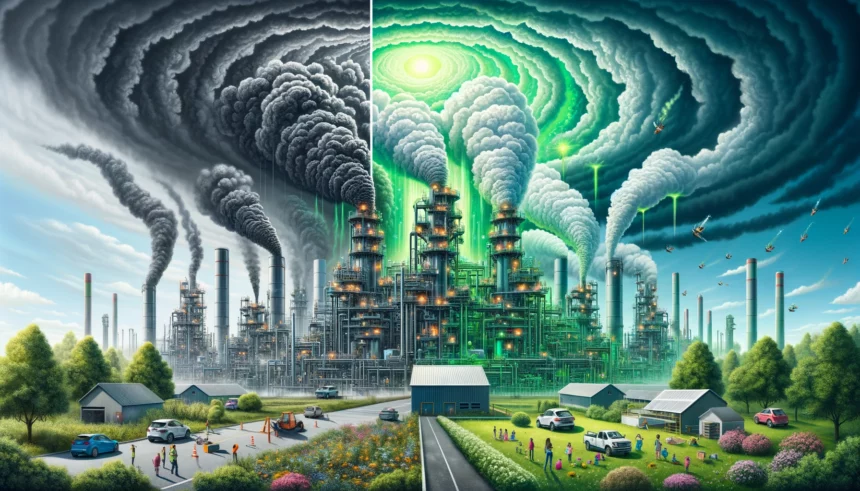In a significant move to protect public health, the Biden administration announced a groundbreaking regulation on Tuesday that mandates more than 200 chemical plants across the United States to significantly reduce the toxic pollutants they release into the air. This initiative is set to address the long-standing issue of air pollution from industrial sites, particularly targeting chemicals known to increase cancer risks.
What’s New in the Regulation?
For the first time in nearly two decades, the government is tightening its grip on pollution from chemical plants. This new rule from the Environmental Protection Agency (EPA) is particularly focused on:
- Ethylene Oxide: Commonly used for sterilizing medical devices.
- Chloroprene: Used in the manufacture of rubber for footwear.
Both of these chemicals have been classified by the EPA as likely carcinogens, posing significant health concerns, especially in regions heavily populated by petrochemical and refinery plants, such as Louisiana’s Cancer Alley.
Who is Affected?
The regulation will primarily impact facilities located in:
- Texas
- Louisiana
- Gulf Coast regions
- Ohio River Valley
- West Virginia
These areas are not only industrial hubs but also home to communities disproportionately affected by pollution, often with a higher population of Black or Latino residents who face elevated rates of cancer, respiratory issues, and premature deaths.
The Impact and Response
EPA Administrator Michael S. Regan emphasized the rule’s potential to cut toxic pollutants by 6,200 tons annually, slashing emissions of the targeted chemicals by 80%. The regulation requires chemical manufacturers to:
- Monitor vents and storage tanks for leaks of ethylene oxide and chloroprene.
- Reduce emissions of four other toxic chemicals: benzene, 1,3-butadiene, ethylene dichloride, and vinyl chloride.
One year after monitoring begins, these facilities must report their emission data quarterly to the EPA, ensuring transparency and public awareness.
A Step Toward Environmental Justice
This regulation is part of a broader effort by the EPA to address environmental hazards in communities surrounding industrial sites. Despite facing legal challenges, including a lawsuit from Louisiana that questioned the EPA’s authority under civil rights law, the agency remains committed to protecting frontline communities from pollution.
Industry Pushback
Not surprisingly, the regulation has been met with resistance from Republicans and industry groups, who argue that the EPA’s scientific assessments may be flawed and the new requirements too burdensome. Companies like Denka Performance Elastomer, heavily impacted by these new rules, have criticized them as “draconian” and threatened legal action.
A Community’s Hope
For families living in the shadow of these chemical plants, the new regulation brings a glimmer of hope. Advocates and environmental groups see this as a critical step in addressing the life-and-death issues associated with pollution. As the regulation rolls out, the affected communities watch closely, hoping for a future where cleaner air isn’t just a possibility but a reality.
This bold move by the Biden administration underscores a commitment to environmental justice and public health, promising to hold polluters accountable while safeguarding vulnerable communities. As the regulation takes effect, it will be closely watched by both its supporters and detractors, marking a new chapter in the fight against industrial pollution.
















